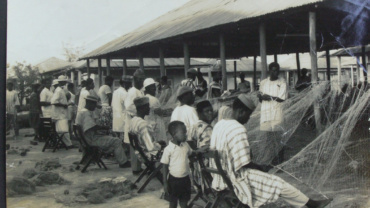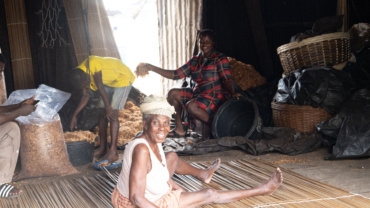During the 1960s, the Ayetoro community expanded its economic and social infrastructure beyond fishing and trade to include a number of cooperative enterprises. Among the most notable of these initiatives was the Cooperative Tailoring Workshop, an organised effort to strengthen local skills, provide employment, and reduce dependence on external markets. The workshop exemplified Aiyetoro’s communal philosophy: resources were pooled, labour was shared, and the benefits were distributed for the welfare of all.
The tailoring workshop was established as part of the Apostles’ broader vision of self-sufficiency. Oral testimonies and archival records indicate that members contributed sewing machines, fabric, and labour, while the community hall initially served as the venue. The workshop was open to both men and women, though women formed the majority of its workforce. They worked in groups, each responsible for particular tasks such as cutting, stitching, or finishing garments. This division of labour was efficient and reflected the cooperative ethos on which Ayetoro was founded.
Archival photographs from the period show rows of sewing machines operated by women in white garments, their heads bent in concentration as fabric passed steadily through their hands. Children are sometimes visible in the background, suggesting the workshop’s role as both a site of production and of informal apprenticeship. Oral accounts confirm that younger members of the community were trained in basic tailoring skills, ensuring continuity of knowledge and creating opportunities for future income.
The products of the workshop served both local and external needs. Uniforms for schoolchildren, ceremonial garments for church services, and everyday clothing were produced for families within Ayetoro. Surplus garments were sold in neighbouring towns, generating revenue that was reinvested into the community. This cycle of production and redistribution demonstrated how economic activity could be aligned with collective welfare rather than individual profit.
The tailoring cooperative also played an important cultural role. Clothing in Ayetoro was not merely functional; it carried symbolic meaning. White garments were essential for church ceremonies, representing purity and equality. By producing these garments locally, the workshop reinforced the spiritual identity of the town while reducing reliance on outside traders. In this sense, the cooperative was not only an economic initiative but also an instrument of cultural preservation.
The management of the workshop followed the same participatory model used in other aspects of Ayetoro’s governance. Decisions regarding production, distribution, and pricing were taken collectively, often during meetings held in the community hall. This structure ensured accountability and reflected the Apostles’ principle that no individual should dominate communal resources.

Although later decades brought significant challenges to Ayetoro through coastal erosion and economic decline, the tailoring workshop of the 1960s remains an important historical example of innovation and resilience. It illustrates how a coastal community, with limited external support, was able to create sustainable livelihoods through collective effort.
As one elder later observed: “The sewing machines were more than tools; they were a symbol of our unity. Every stitch reminded us that Ayetoro was built by many hands, working together.”




